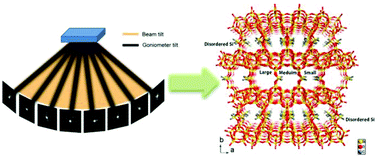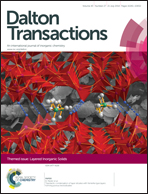Ab initio structure determination of interlayer expanded zeolites by single crystal rotation electron diffraction†
Abstract
Layered solids often form thin plate-like crystals that are too small to be studied by single-crystal X-ray diffraction. Although powder X-ray diffraction (PXRD) is the conventional method for studying such solids, it has limitations because of peak broadening and peak overlapping. We have recently developed a software-based rotation electron diffraction (RED) method for automated collection and processing of 3D electron diffraction data. Here we demonstrate the ab initio structure determination of two interlayer expanded zeolites, the microporous silicates COE-3 and COE-4 (COE-n stands for International Network of Centers of Excellence-n), from submicron-sized crystals by the RED method. COE-3 and COE-4 are built of ferrierite-type layers pillared by (–O–Si(CH3)2–O–) and (–O–Si(OH)2–O–) linker groups, respectively. The structures contain 2D intersecting 10-ring channels running parallel to the ferrierite layers. Because both COE-3 and COE-4 are electron-beam sensitive, a combination of RED datasets from 2 to 3 different crystals was needed for the structure solution and subsequent structure refinement. The structures were further refined by Rietveld refinement against the PXRD data. The structure models obtained from RED and PXRD were compared.

- This article is part of the themed collection: Layered Inorganic Solids

 Please wait while we load your content...
Please wait while we load your content...